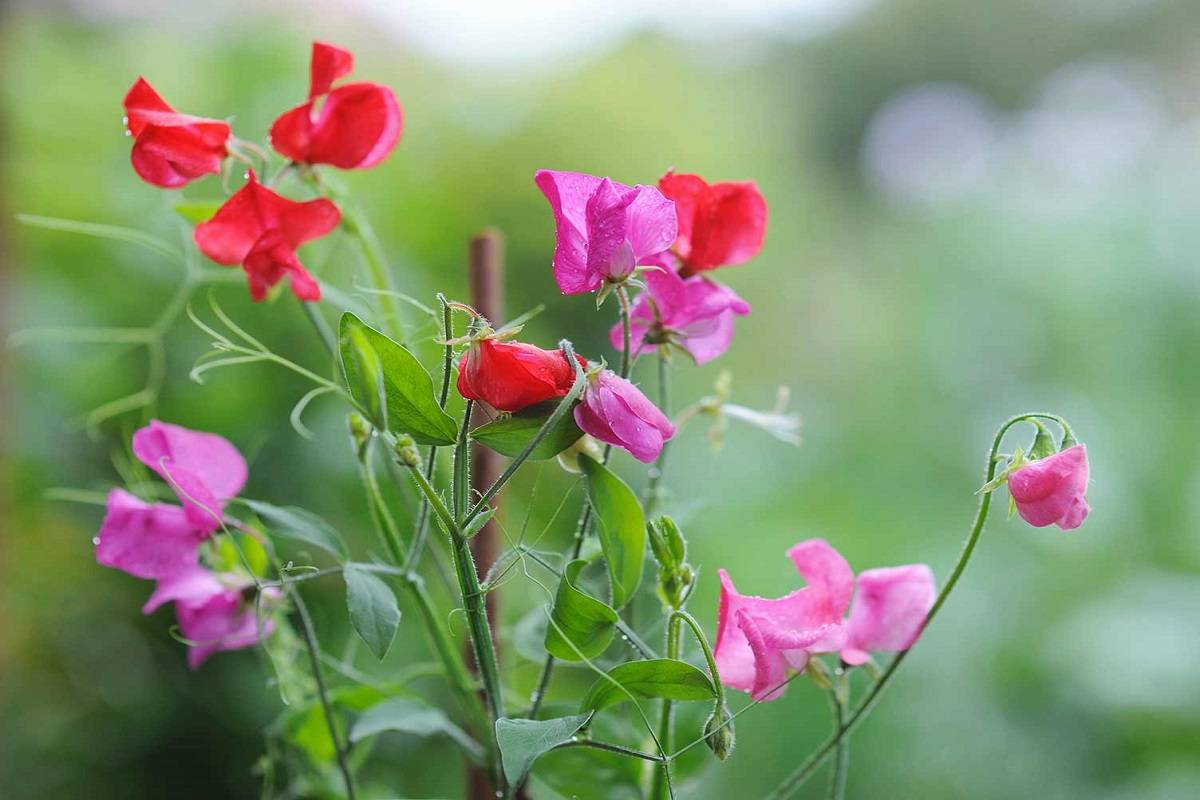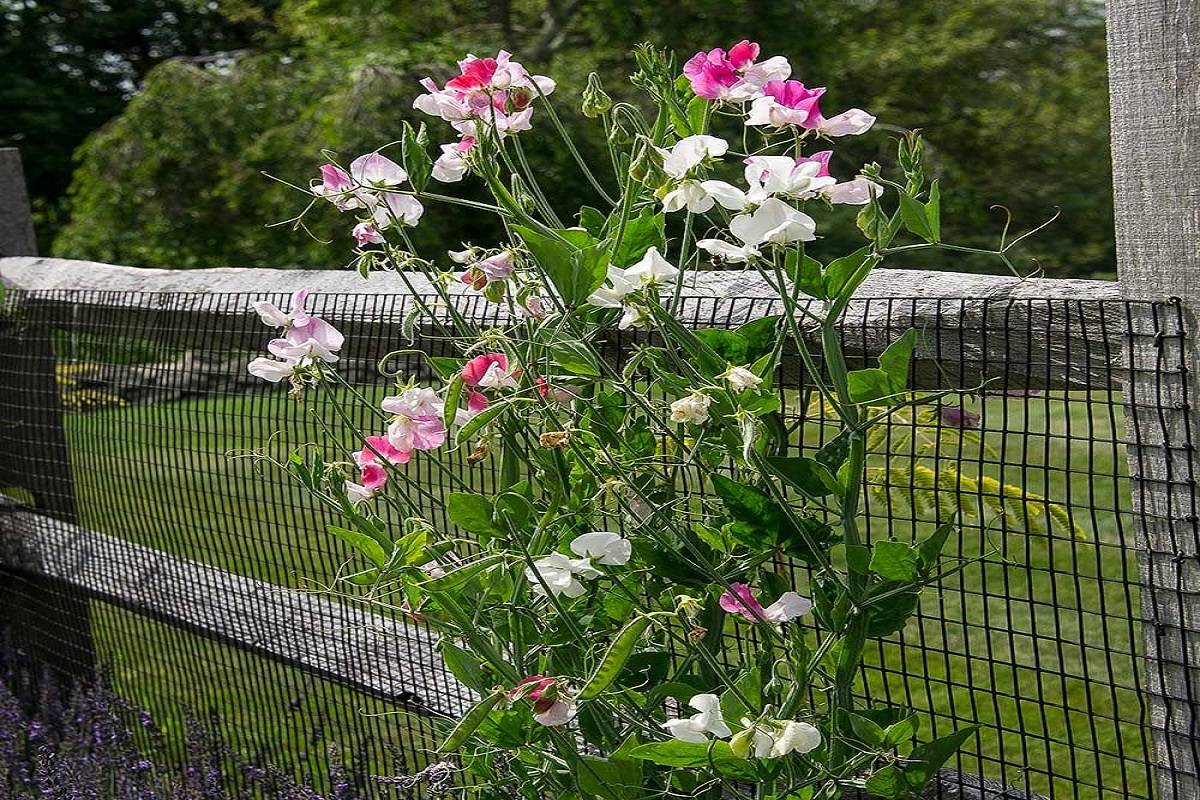
One of the best plants for cutting, sweet peas (officially known as Lathyrus odoratus) provide appealing hues and aromas for spring and early summer bouquets. The tiny blossoms emit a grape-like fragrance into the air and come in a variety of beautiful hues. If you wish to grow this flower then here is a detailed guide.
Why do people grow Sweet Peas?
Sweet peas are cultivated for their lovely, ruffled blossoms, which come in pastel, blue, and bicolor hues. They are beautiful cut flowers since many types have scented blooms. The cultivation and breeding of sweet peas for both the home grower and the florist industry have a long history.
How to Plant Sweet Peas?
-
Sow sweet peas in the fall in warmer climates with mild winters. Other than that, plant seeds in late winter or early spring. Before planting, soak your seeds for 24 hours. This shortens the sprouting process by a few days and softens the seed coat.
-
Put dirt in your planting containers while the seeds are soaking. Sweet peas start with a lot of roots, so the more space you can provide them in the beginning, the better they will grow in the long run. I use 3 1/2 in (9 cm) broad by 9 cm deep pots.
-
Plant two seeds in each container by pressing a fingernail into the ground 12 in (1.25 cm) deep.
-
To boost humidity and hasten germination, cover pots with a plastic dome covering. Place in a warm greenhouse or a home window with good light.
-
Pinch out the central growth point just above a leaf joint once plants are 4 to 6 in (10 to 15 cm) tall, leaving just 2 or 3 leaf nodes. The plant will be encouraged to branch out strongly from the base as a result.

-
Sweet peas consume a lot of food. To ensure that the sweet peas have a feast waiting for them after their roots penetrate deeply, I also prepare the soil as usual and then dig a trench that is one foot (30 cm) deep through the middle of the bed. This trench is then filled with compost or well-rotted manure.
-
Vines demand a location that receives full sun as well as a sturdy framework to climb and develop quickly. Affix Tenax Hortonova netting or 6 ft tall (1.8 m) metal fence to the tall poles spaced around 8 ft (2.4 m) apart down the row for them to climb.
-
Plant seedlings in two rows, one on either side of the trellis, about 8 inches (20 cm) apart down the row, around the time of the final spring frost. To ensure straight stems, keep them securely fastened to the trellis. Be careful to continue tying because once the vines get going, you can anticipate weekly growth of more than 1 ft (30 cm).
-
Sweet peas adore water, and they can't survive without regular watering. As soon as you plant them, install drip irrigation or soaker hoses to keep them hydrated throughout the hotter months. Every two to three days, we deeply water.
-
It's crucial to prevent plants from going to seed to continue flowering, so be sure to regularly harvest and deadhead the blooms. Choose stems with at least two unopened blooms at the tip for the best vase life. Although they can be chosen when more open, they won't last as long in the vase. Sweet peas only endure 4 to 5 days in a vase, making them transient cut flowers. Adding sugar or a floral preserver to the water has a significant impact.
What time do they flower? Are there any tricks to receive more blossoms?
Sweet peas will begin to blossom 4 to 6 weeks after they begin to show apparent vining. Whether or not the plants have been pulled back will affect the timing of the bloom. Although pinching can somewhat limit development, it will result in bushier plants with more blooms. In the spring and early summer, sweet peas will grow and bloom more quickly as the days lengthen. Compost or old dry manure can help to supply nutrients for the growth of huge, many blooms. A fertilizer with a phosphorus-to-nitrogen ratio greater than one can also increase flower output.
Flower cutting Technique
Cut the flowers early in the day to prevent the sun from drying them off. For your vase, use newly opened flowers with the longest stems. Just the side blooming stems of the plant should be clipped; leave the main stem alone.











